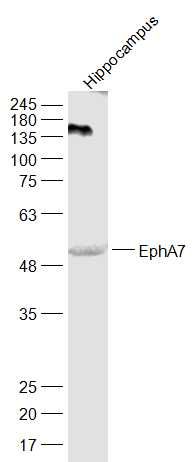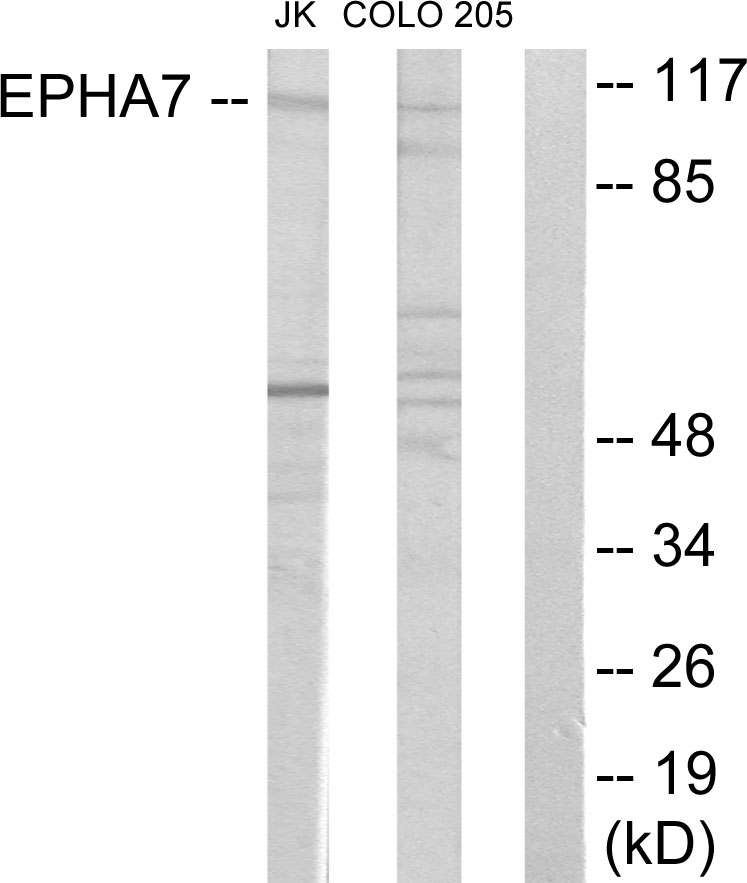
WB analysis of extracts from JK cells (lane 2) using GTX55377 EphA7 (phospho Tyr791) antibody. Left : Primary antibody pre-incubated with the antigen specific peptide Right : Primary antibody
EphA7 (phospho Tyr791) antibody
GTX55377
ApplicationsWestern Blot
Product group Antibodies
ReactivityHuman
TargetEPHA7
Overview
- SupplierGeneTex
- Product NameEphA7 (phospho Tyr791) antibody
- Delivery Days Customer9
- Application Supplier NoteWB: 1:500-1:1000. *Optimal dilutions/concentrations should be determined by the researcher.Not tested in other applications.
- ApplicationsWestern Blot
- CertificationResearch Use Only
- ClonalityPolyclonal
- Concentration1 mg/ml
- ConjugateUnconjugated
- Gene ID2045
- Target nameEPHA7
- Target descriptionEPH receptor A7
- Target synonymsEHK-3, EHK3, EK11, HEK11, ephrin type-A receptor 7, EPH homology kinase 3, EPH-like kinase 11, Eph homology kinase-3, receptor protein-tyrosine kinase HEK11, tyrosine-protein kinase receptor EHK-3
- HostRabbit
- IsotypeIgG
- Protein IDQ15375
- Protein NameEphrin type-A receptor 7
- Scientific DescriptionThis gene belongs to the ephrin receptor subfamily of the protein-tyrosine kinase family. EPH and EPH-related receptors have been implicated in mediating developmental events, particularly in the nervous system. Receptors in the EPH subfamily typically have a single kinase domain and an extracellular region containing a Cys-rich domain and 2 fibronectin type III repeats. The ephrin receptors are divided into 2 groups based on the similarity of their extracellular domain sequences and their affinities for binding ephrin-A and ephrin-B ligands. Increased expression of this gene is associated with multiple forms of carcinoma. Alternative splicing results in multiple transcript variants. [provided by RefSeq, Dec 2013]
- ReactivityHuman
- Storage Instruction-20°C or -80°C,2°C to 8°C
- UNSPSC12352203





![IHC-P analysis of human Breast tissue using GTX83143 EphA7 antibody [6C8G7].](https://www.genetex.com/upload/website/prouct_img/normal/GTX83143/GTX83143_20170912_IHC-P_w_23061322_724.webp)



